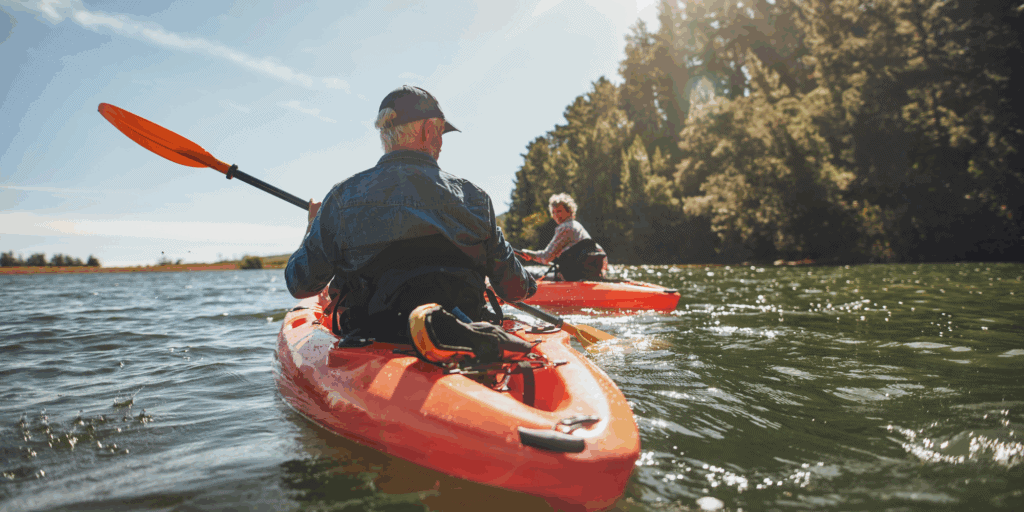Most people seek to age as actively, gracefully and independently as possible. According to AARP, almost 90% of adults over the age of 65 want to stay in their current home as they age. If this is your desire and a viable option, proper planning and preparation can help you remain in your home.
The first step is to identify current obstacles or challenges in your home. Do you have trouble operating your phone? Navigating stairs? Preparing a meal? Locking the front door? Do you have a way to get groceries or visit a friend?
Once you see where the snags (or, potential snags) are, you can better plan for ways to address your safety and independence.
Preparing the Home
Consider getting a professional safety assessment of the home. Performed by a trained advisor, the assessment will include the exterior of the home, all entry areas, every room (including bathrooms, bedrooms, laundry room, garage, basement, kitchen, dining room), lighting evaluation, fire safety and electrical safety. When the assessment is completed, you’ll receive a comprehensive report. If there are suggestions for improvement, the advisor can recommend vetted contractors and services to bring the safety standards to an acceptable range. More information on assessments can be found at www.agesafeamerica.com or by googling “comprehensive home safety assessment”.
If you’re unable to have an assessment performed by a professional, then perform your own. Go through your home room-by-room and identify potential slipping or tripping hazards, as well as areas that are difficult to access or maintain.
As you’re evaluating the home, focus on safety and preparing the home in the event of an emergency.
Safety
There are three main safety risks as you age in place.
- Risk of Falling – Falling is one of the most serious health risks facing the older population. Preventing falls should be a primary consideration.
- Bathroom
- Place non-slip mats in bath and shower
- Install grab bars (A towel rack will not suffice. It will collapse under the bodyweight of an individual when falling)
- Provide a shower seat
- Replace the shower head with a hand-held nozzle
- Install a raised toilet seat or frame
- Stairs (if applicable)
- Ensure there are handrails on each side of staircase
- Tighten existing handrails
- Clear stairs of any clutter
- Consider a stairlift chair
- Differentiate between the stairs. Aging eyes may find it difficult to separate one step from the next. Adding safety tape or stair treads can help.
- Cords
- Tape down or tuck away any cords that stretch across the floor
- Remove excess furniture
- Step Stools, ottomans, etc. can be difficult for some seniors to sidestep
- Deep, plush seating arrangements can be difficult for seniors to lift themselves out of.
- Furniture legs that curve outward create a tripping hazard
- Remove loose rugs.
- Get a cane or walker, and have available before the need arises
- Be sure footwear has non-slip soles.
- Install brighter lighting, and be sure switches are easily accessible.
- Consider installing illuminated light switches
- Consider installing motion-sensor lighting
- Be sure there is at least one, no-step entry into your home.
- Purchase a fall sensor. If you fall and don’t get up immediately or hit the “reset” button, a call center is alerted. They will try to reach you by phone and if unsuccessful, will call 9-1-1.
- If you have a pet, consider establishing a secure area for the pet to remain while you move around. Pets underfoot are a huge fall risk.
- Remain active. A sedentary lifestyle will only ensure you have less strength, balance and flexibility, and will be more likely to fall.
- Bathroom
- Risk of Burning yourself or starting a fire
- Install an automatic shut-off switch on the stove
- Consider installing an oven with a side swing door, preventing the need to lift items over the oven door. Traditional pull-down oven doors are also difficult to maneuver from a wheelchair.
- Invest in appliances with automatic shut-off features.
- Place a fire extinguisher in the kitchen
- Check that appliances, outlets, cords are in good working order
- Install a smoke detector, and ensure batteries are replaced every six months
- Set water temperature to 120 degrees or lower because as you age you can lose sensitivity to temperature
- Poisoning
- Install a carbon monoxide detector
- Be sure all medications are labeled. Consider a daily sorter for medication, so there is no confusion about if the medicine has been taken. There are multiple offerings at various levels of control for medication sorters and reminders.
- Keep only a minimal amount of cleaning supplies available
Part of safety is being prepared for emergencies
- Vial of LIFE (Lifesaving Information for Emergencies) – plastic bag taped somewhere clearly visible (first responders are trained to look for these, taped on refrigerator or inside front door). This bag should contain information that would assist rescue crews in the event you cannot communicate. For information on this, and items to include, visit www.vialoflife.com
- Flashlight and batteries
- First Aid Kit
- At least three days’ worth of non-perishable food
- Drinking water
Other Measures for Preparing the Home
- Install a peephole in the front door (and, remember to never open the door for anyone you haven’t specifically invited to your home).
- Make sure that electrical outlets and switches are easily accessible. Note any that are below your hip or above your shoulder. Although they may be accessible now, this may change in the future and relocating outlets and switches is a fairly simple task for a contractor.
- If your home is two stories, begin the process of consolidating needed items to the first floor.
- Consider replacing doorknobs with lever-style handles.
- Create an area just inside the doorway to your home, as well as one just outside the doorway to your home, for placing packages. This area should be at hip height in order to keep balance high, and to keep hands free.
If you find the need for a gadget to make tasks easier, medical supply stores and some online stores sell an array of items meant to help you maintain your independence (i.e. razor holder that attaches to the hand, so arthritic fingers don’t have to grip a thin handle). One such site is https://www.hobbr.com/products-elderly-independence/
Access to Meals and Essentials
- If you are still driving, then getting essentials may not be of concern. At some point, though, you may no longer drive, and it would be prudent to consider options for getting these necessary items.
- If you are still mobile but just not driving, then a local transportation service or senior center might offer rides.
- If mobility is an issue, locate grocery stores that deliver to your home. If that is unavailable, perhaps a volunteer service or even a neighbor or friend might do the shopping for you.
Need for Companionship
- Have a plan in place to stay connected to others. Enlist the help of your local community center, religious organizations, nearby family members, etc. Senior loneliness and isolation can cause depression, lower brain function and chronic illness, just to name a few.
This is also a good time to plan for next steps if the day comes when living independently is no longer a viable option. Write down or share your wishes with family or friends for in-home caregivers, assisted living options, etc.
Successfully aging in place is possible, but it’s important to develop a plan now while you can share your wishes. Keep in mind that the best of plans still require review periodically for any needed modifications.








